The Balkan War proved to be a devastating blow to the Ottoman Empire. It witnessed the loss of European territories, along with their inhabitants. Not only did the army suffer significant casualties during the conflict, but its very structure and organization crumbled. Recognizing the gravity of the situation, the Ottoman General Staff initiated an extensive reform effort for the military, which also encompassed the overhaul of war strategies. Prior to the Balkan War, the Ottoman Army possessed twelve different campaign plans, but all of them had become obsolete. They were to be replaced by a single, comprehensive plan.
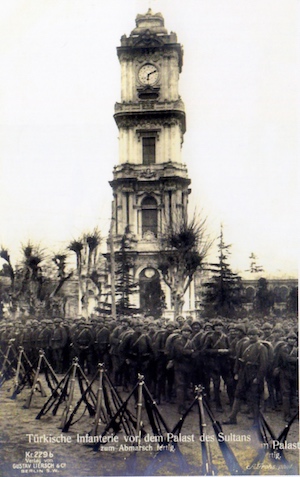
Colonel Bronsart von Schellendorf, who served as the chief-of-staff for the German Military Mission, finalized the Primary Campaign Plan for the Ottoman Army on 7 June 1914. This plan was drafted before the events of the fateful summer of 1914, which would plunge the entire world into an unprecedented catastrophe. Therefore, it solely reflected the strategic landscape as it stood at that time, with a particular focus on the potential renewed threats from the Balkans. Accordingly, the plan was formulated under the assumption that the Ottoman Empire would have to simultaneously contend with both a Balkan coalition and Russia.
As per the Schellendorf Plan, an observational force was to be stationed along the borders of Greece and Bulgaria. This contingent's sole purpose would be to monitor enemy movements, maintaining a defensive stance and refraining from any actions that might provoke the enemy or instigate offensive operations. Meanwhile, the army designated to confront the Russians in Eastern Anatolia was to exploit favorable operational conditions, actively seeking opportunities for offensive maneuvers to gain a tactical edge against the Russian forces. Simultaneously, significant attention was to be devoted to the protection of Istanbul and the Turkish straits. Fortified zones in Edirne and Çatalca would serve as bulwarks safeguarding the route to the Ottoman capital, with additional forces to be dispatched from Syria and Mesopotamia to reinforce the units stationed there. The primary concentration of forces would be positioned behind the Çatalca defensive line.
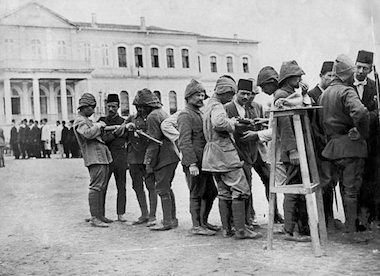
Following the unfolding events in Europe in July 1914, the plan required a substantial revision due to the dramatic shift in the political landscape. The Ottoman Empire had become closely aligned with Germany, formalizing their alliance through a secret treaty inked on 2 August 1914, followed by another pact with Bulgaria. With this new alignment, the Ottoman Empire's potential adversaries expanded well beyond Russia to encompass the entire Entente, while Bulgaria ceased to be an adversary. This recalibrated the strategic options, with the possibility of launching offensives against Romania and Serbia. Furthermore, the prospect of attacking the Russians in the Caucasus and Eastern Anatolia emerged as a more promising strategy than previously envisaged, thanks to Russia's diversion of its forces to engage with Germans and Austrians in other European theaters, rather than concentrating its might solely on Turkey.
In a similar fashion, a campaign against Egypt and the Suez Canal seemed wise, considering the probability that Britain would give precedence to its commitments on European fronts.
In response to these shifting circumstances, Bronsart von Schellendorf undertook a thorough revision of the plan, completing it on 6 September 1914. Under this updated strategy, the Fourth Army was tasked with the offensive in Egypt, while the Third Army would initiate an assault against the Russians in Eastern Anatolia.
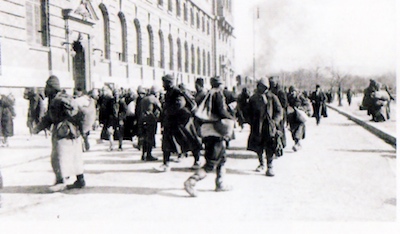
Schellendorf did not find unanimous support within the Ottoman Army. Just two days before he finalised his updated plan, Colonel Hafız Hakkı Bey, the second assistant chief-of-staff, put forward his own campaign strategy, one significantly more assertive in nature. Under his plan, forces from Istanbul and Thrace were to be transported to the eastern Black Sea coastline, where they would participate in an all-out assault against the Russians. Hafız Hakkı Bey held the hope that the Russians, having already been defeated by the Germans in Eastern Europe, would be weakened and vulnerable. In October, Hafız Hakkı Bey revisited his plan, this time envisioning support for Romania and Bulgaria in their struggle against the Serbs. He also proposed an attack on the Suez Canal and offensive operations against Persia. Hafız Hakkı Bey's plans were certainly ambitious, but they had to be set aside due to the Ottoman Army's insufficient resources for their execution.
As the war in Europe began, the Ottoman General Staff had embraced Schellendorf’s Primary Campaign Plan, which was supported by a Concentration Plan for organising the command and control of the army and positioning it to execute the campaign plan, as well as a Mobilisation Plan for generating forces and preparing them for war.
Problem of Resources
Resources and equipment were required to put the campaign plans into action; however, mobilising the army proved to be the most challenging task for the Ottoman Empire on the eve of the World War. The Empire simply lacked the strength to engage in another major conflict. Its resources were inadequate, its industry was underdeveloped, and its finances were in ruins. Railroads and communication networks were so poorly developed that executing deployment schedules was unfeasible.
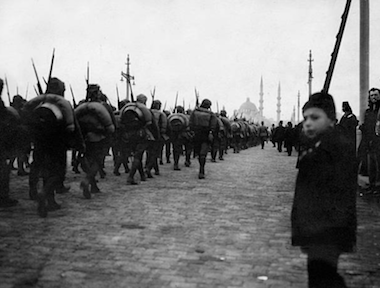
First and foremost, there was the issue of manpower. The estimated population of the Ottoman Empire before the war stood at around 25 million, with ten million being Turks, six million Arabs, 1.5 million Kurds, 1.5 million Greeks, and one million Armenians. Despite this diversity, military planners in Istanbul believed that only the Turks should shoulder the military burden. The rest of the population was generally considered hostile and not aligned with the Empire's destiny. It's worth noting, however, that individuals from non-Turkish groups contributed to the war effort and did so loyally. Still, they were not deemed reliable elements within the army.
Transportation and communication posed significant challenges, rendering it exceedingly arduous for the Empire to conduct a contemporary war against several well-equipped industrial nations. The railways in the European territories had been lost during the Balkan War, and in Anatolia, only disjointed railway lines existed, failing to form a cohesive system. The common roads upon which the army relied were no better than the railways—few in number, fragmented, and in a state of disrepair. On the contrary, sea transport showed relative efficiency, yet it necessitated a formidable navy, which the Ottoman Empire lacked, to shield it from enemy threats.
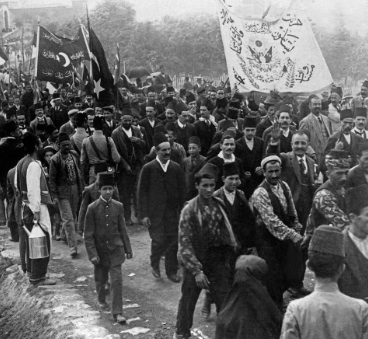
The telegraph system exhibited a higher level of development compared to the transportation network. There were 55,383 kilometres of telegraph lines, with an additional 11,027 kilometres integrated into the railway system. Nevertheless, the telegraph system was far from equipped to handle the demands imposed by the war. A wireless communication system was introduced only in the latter stages of the conflict and proved to be of limited practical utility. In contrast, telephone services were solely accessible in Istanbul, and telephone communication was not commonly utilised at the battlefronts, except for the Dardanelles region.
In terms of its economic and financial standing, the Ottoman Empire was far from a nation that benefited from the changing landscape brought about by the industrial revolution in Europe and the accumulation of capital. The Empire not only grappled with expanding budget deficits and mounting foreign debt but also had to engage in a struggle against industrially advanced nations without the advantage of modern equipment and infrastructure. Instead, it largely relied on limited imports from Germany and Austria-Hungary.
General Mobilisation
During peacetime, the army comprised the classes of 1891, 1892, and 1893, consisting of individuals aged 20 to 22, totaling 200,000 men and 8,000 officers. The standard period of obligatory service was two years for infantry and cavalry and three years for artillery. All men were subject to military service, drafted in accordance with their chronological age, commencing at 20 and extending until 25 years later.
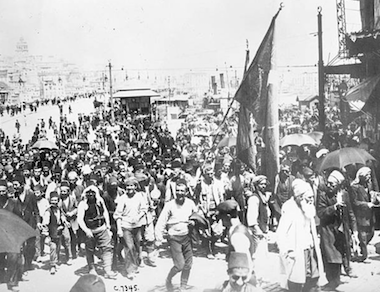
General mobilisation was declared on 2 August 1914, instructing all armed forces units, except for the VII Corps in Yemen, the 21st Division in Asir, and the 22nd Division in Hejaz, to initiate war preparations. 3 August marked the commencement of Turkish mobilisation. With this mobilisation, the classes spanning from 1875 to 1890 were summoned as reserves, and those born between 1868 and 1874 were called upon as home guards. Each age category comprised approximately 90,000 men, and the General Staff estimated that about 1 million men and 210,000 animals could be readily recalled. The mobile field army was designed to include 460,000 men, 14,500 officers, and 160,000 animals. Meanwhile, the gendarmerie was to consist of 42,000 personnel, encompassing gendarmes, frontier guards, and mule-mounted troops. The remaining individuals called to service were assigned to fortress garrisons, coastal defenses, communication, and transportation services.
The call to arms garnered a swift response from the populace, and soon the General Staff recognized that the number of men enlisting exceeded their expectations. Because of this surplus, depot units were established, and some older age groups were released from service, to be summoned back when necessary. Due to the absence of a proper population survey system in the Ottoman Empire, the recruitment process became a significant challenge, despite the absence of a shortage of men.
Additional issues surfaced. Firstly, there was a lack of coordination between the Mobilisation Department of the General Staff and the relevant departments within the Ministry of War. Moreover, the German Military Mission exerted considerable effort to maintain control over the process, ensuring that the Ottoman Army mobilised in a manner that best aligned with German objectives.
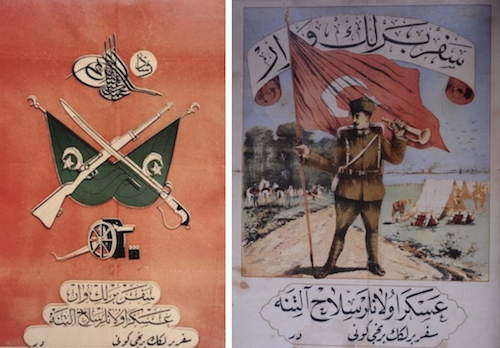
Despite all the challenges and shortages, mobilisation was concluded on 25 September 1914, taking a total of 53 days. It surpassed the initially estimated 40-45 days, yet it proved to be a more efficient process compared to the mobilisation preceding the Balkan War. This mobilisation effort aided in replenishing the ranks of Ottoman army units and restoring them to their pre-Balkan War strength. However, even after undergoing a comprehensive reorganisation, the Ottoman Army remained well below its full strength as the Empire entered the war. Fourteen out of the 36 infantry divisions established in August 1914 were still undergoing complete reconstruction, while eight had experienced significant redeployment during the year. The overall effectiveness of the newly formed and redeployed units was notably low.
The Ottoman Army, initially composed of four armies, went on to establish the Fifth and Sixth Armies in 1915. Then, in 1917, the Seventh, Eighth, and Ninth Armies, along with the Yıldırım and Caucasian Army Groups, were created. However, despite the increase in the number of armies, the Empire's resources were dwindling, both in terms of manpower and supplies. By 1918, there was little left of the Ottoman Army.
![]()
PAGE LAST UPDATED ON 28 DECEMBER 2023